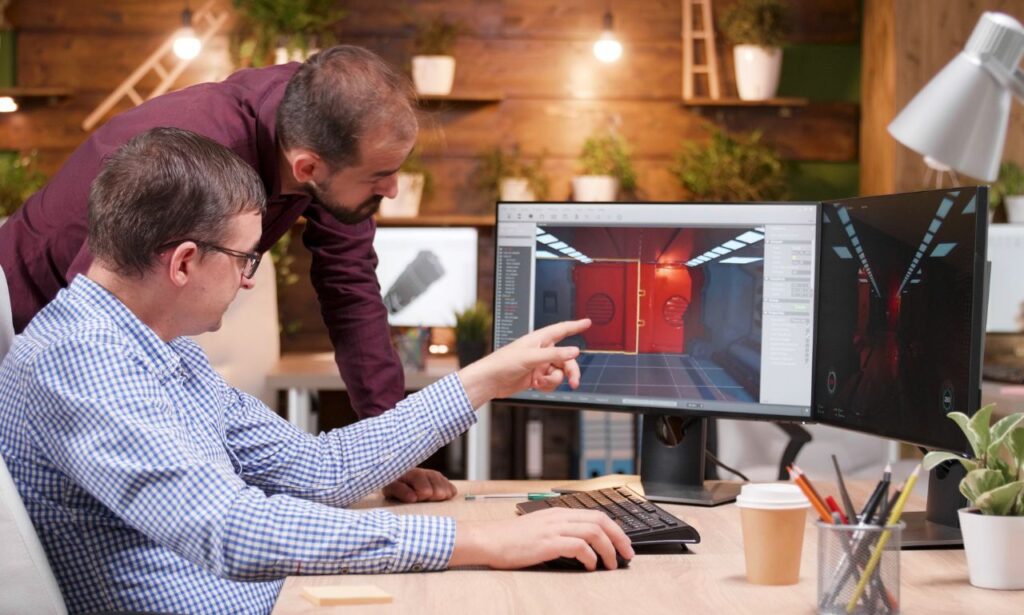In an era when digital screens are omnipresent and creativity is everywhere, people are craving one thing above all: real, tangible experiences. Enter the phenomenon of spaietacle—a blend of “space” and “spectacle” that pushes the boundaries of imagination by immersing participants in fully interactive environments. Unlike a traditional show that audiences observe from afar, a spaietacle enables participants to step into the performance, interact with it physically, emotionally, and sensorially.
This article dives deep into the spaietacle movement: its roots, essential components, standout examples, and why it’s becoming one of the most exciting developments in art, entertainment, education, marketing, and well-being.
What is a spaietacle?
A spaietacle is more than a production—it’s a total sensory environment designed to be entered rather than viewed. It merges spatial design, performance, sound, visuals, scent, touch, and narrative into a cohesive world. Attendees don’t sit quietly; they explore, influence, and shape their journey as they move through the space. This immersive format is reshaping expectations for live events, exhibitions, and storytelling.
Origins and evolution of spaietacle
The term spaietacle emerged in creative circles as designers and technologists began experimenting with immersive theatre formats in immersive theatre, permanent installations, and pop-ups. Early seeds sprouted in avant-garde theatre in the 1960s and 70s, bloomed further in experimental performance art and site-specific opera, and have now flowered into high-tech, widely-accessible spectacles that blend art, interactivity, and blockchain, VR, AI, and spatial computing.
Key components of any spaietacle
To truly be a spaietacle, an event usually includes:
-
360° spatial design: Every part of the environment is intentional—from walls and lighting to textures and scent.
-
Multi-sensory elements: Soundscapes, aromas, light, temperature, and tactile surfaces create mood and atmosphere.
-
Interactive storytelling: Participants influence the environment through decisions, movement, or sensory input.
-
Narrative arc: A story—literal or poetic—almost always guides the experience.
-
Technology integration: Projection mapping, spatial audio, AR, motion sensors, and other tech create dynamic responsiveness.
Spaietacle vs traditional performance
Traditional theatre or cinema places audiences in seats, asking them to observe. A spaietacle demands participation. Audiences might choose the path they follow, trigger visual effects with gestures, open secret doors, or engage with performers and digital interfaces.
This shift transforms spectators into active participants, enhancing emotional engagement, memory retention, and personal connection.
Spatial architecture as performer
In spaietacles, the built environment is as critical as actors or performers. The layout, materials, lighting, acoustics, and even floor texture are choreographed to draw attention and provoke emotion. Designers often repurpose unconventional venues—warehouses, basements, rooftops—or build ephemeral stages that dissolve after one run, allowing each experience to feel unique and temporary.
Technology and immersion
The backbone of modern spaietacles is technology:
-
Projection mapping transforms walls, floors, and objects into reactive screens.
-
Spatial audio creates realistic directional soundscapes.
-
AR and VR layer digital content onto physical sets.
-
Interactive sensors respond to motion, touch, or proximity.
-
Artificial intelligence adapts dialogue or visuals based on audience behavior or mood.
These tools not only deliver spectacle—they empower participants to dynamically affect the environment.
Sensory design: more than visuals
The spaietacle experience deliberately engages all senses:
-
Sight via projections, lighting, and props.
-
Sound via surround sound systems, sound sculptures, or vocal performers.
-
Touch through interactive textures or object manipulation.
-
Smell via diffused scents that evoke emotion.
-
Temperature through localized heating or cooling effects.
This careful layering strengthens emotional impact, increases immersion, and makes the event more memorable.
Narrative expression in spaietacle
Even abstract spaietacles follow an emotional or conceptual arc. Participants might trace the steps of a character, explore thematic zones (sadness, joy, mystery), or complete tasks that reveal story beats. While some narratives are linear, many offer branching pathways, letting participants forge their own meaningful journey.
Audience participation and agency
One hallmark of spaietacles is the freedom to choose—path selection, interaction, decision-making. Technological or analog triggers (like touch sensors or live performers) respond to participant actions, creating emergent narratives. This autonomy fosters deeper emotional attachment and personalization.
Exemplar spaietacle events
Several high-profile experiences illustrate what’s possible:
-
TeamLab Borderless (Tokyo): A labyrinth of interactive, digital gardens and dreamscapes that respond to movement and proximity.
-
Meow Wolf (Santa Fe, Denver, Las Vegas): Surreal, artist-built environments featuring portals, secret rooms, and live actors weaving engaging story fragments.
-
Immersive Van Gogh Exhibit: 360° projection of Van Gogh’s art transforming gallery spaces into glowing, moving paintings that envelope the senses.
-
Arcadia Stage at Glastonbury Festival: A massive spider structure emitting fire, sound, and light that spins floors and fuels participant awe and communal thrill.
These spaietacles combine artistry, space, technology, and interactivity to deliver impact.
Impact on museums, galleries, and learning
Institutions are embracing spaietacle principles to attract broader audiences. History museums, natural science exhibits, and art institutions use projection, sound, interactive elements, and narrative structure to make learning multi-sensory. Concepts like climate change, paleontology, human rights, or social history become experiential rather than passive.
Brand experiences and retail
Retail brands are deploying spaietacle techniques to break through advertising noise. Think of pop-up stores where product exploration is tied to narrative zones, product interactives, scent-infused packaging, and performance art. These create deeper brand affinity, shareable social media moments, and consumer identification.
Psychological and emotional effects
Researchers show that immersive, sensory-rich environments boost emotional engagement, offer stress relief, enhance empathy, and foster social bonding. Participants who feel “inside” a story—including places or issues—often experience stronger motivation, recall, and empathy.
Accessibility and inclusion in design
Many spaietacles embed multiple accessibility features:
-
Audio description or guided apps for visually impaired.
-
Captions, sign language, or visual storytelling for hearing-impaired guests.
-
Tactile maps or textured guides.
-
Optional sensory-friendly hours for neurodiverse participants.
However, work remains to fully bridge equity gaps in immersive formats.
Spaietacle as activism and education
Immersive formats are ideal for social change. A spaietacle might let visitors experience life in war-torn zones, simulate climate events, or explore marginalized perspectives through multi-sensory storytelling. This experiential element deepens empathy and may influence action far more than text or imagery alone.
Creating a homegrown spaietacle
You don’t need millions to experiment:
-
Outline a small story or concept.
-
Map out zones in a blank home, office, or rented space.
-
Use projector lamps, wireless speakers, motion sensors, and LED strips.
-
Introduce textures, scents, and interactive cues (like switches or drawers).
-
Invite a small audience and iterate through feedback.
Collaboration among DIY designers, local artists, and technologists can yield powerful community-based prototypes.
Challenges in production
Scaling a spaietacle presents hurdles:
-
High costs in tech, permits, and venue repurposing.
-
Technical glitches or safety issues.
-
Participant overload—too much stimulus can overwhelm.
-
Liability and insurance for interactive components.
-
Difficulty blending spontaneity and control while maintaining smooth flow.
Collaboration and interdisciplinarity
Spaietacles thrive when:
-
Artists envision emotional arcs.
-
Engineers build interactivity systems.
-
Designers shape visuals.
-
Sound artists choreograph soundscapes.
-
Accessibility consultants expand audience reach.
These diverse skills need unified direction and strong artistic leadership.
Economic and tourism potential
Cities are increasingly hosting spaietacle festivals as tourism draws. Countries integrate immersive strands into cultural development, enhancing nighttime economies, peripheral venues, and community engagement. As new forms of experiential tourism—like haunted houses or art cruises—gain cult followers, spaietacles are becoming mainstream travel magnets.
Virtual vs physical spaietacle
Virtual reality delivers vivid encapsulated worlds. But physical spaietacles preserve tactile surfaces, temperature, real social proximity, scent, and serendipity. Hybrid experiences—VR lenses overlaying physical spaces—may be the next step, combining digital flexibility with corporeal experience.
Preparing for a spaietacle visit
Here’s how to fully engage:
-
Wear comfortable clothes and footwear.
-
Bring a water bottle.
-
Leave ample room for spontaneous movement.
-
Be ready to document the experience—but also stay present.
-
Choose event times wisely; avoid congested hours if available.
The future of spaietacle design
Looking ahead to late 2025 and beyond, expect:
-
AI-driven personalization tuning each event in real time.
-
Biometric sensors adjusting environment automatically.
-
Simple immersive kits for homes, schools, and small venues.
-
Spaietacle apps offering hybrid remote presence.
-
Cross-border collaborations blurring cultural expressions.
Final reflections
Spaietacles offer a radical departure from passive entertainment. They energize public spaces, deepen experiential connection, and foster new paths of creativity. Whether you’re a visitor swept up in a swirling garden of lights or a DIY creator assembling projections in your garage, spaietacle opens up worlds that are tactile, emotional, communal—and utterly unforgettable.






